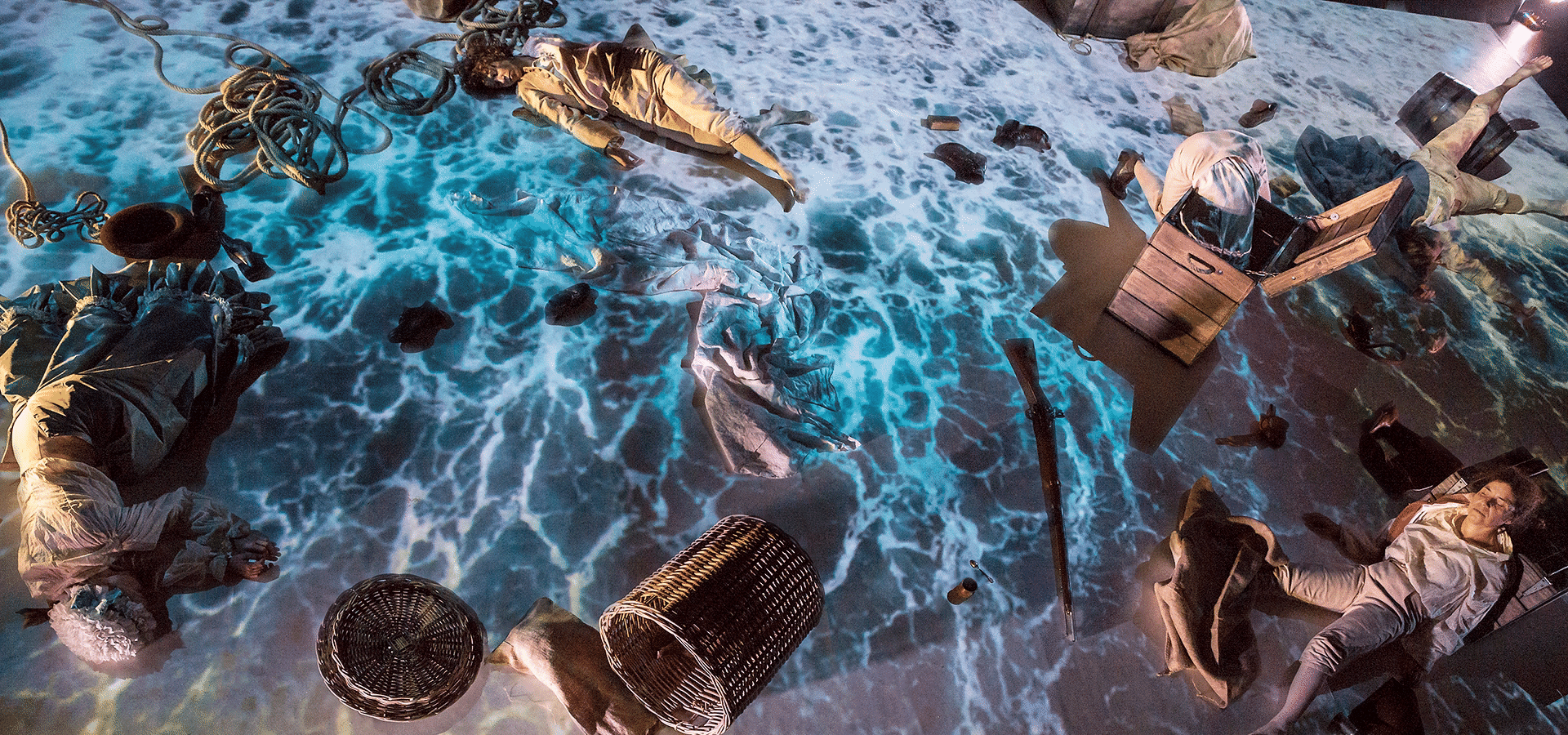
SUGAR
The first part of the trilogy: “A nation’s self-hatred – Denmark between shame and self-overestimation” – about the Danes’ self-understanding over the last 300 years and how it has shaped our relationship with the outside world.
SUGAR begins its narrative in the 18th century. The Danes have traveled the world; inquisitive, longing and seduced by the strange, but also greedy for wealth. The slave captain, the priest, the accountant, the doctor, the plantation owner and the poor ship boy make their entrance on the foreign shores. For hundreds of years, the sugar flows from the West Indies’ slave colonies to Copenhagen and leaves its mark. In 1878, 30 years after the abolition of slavery, hunger and poverty culminated in Denmark’s largest workers’ uprising “Fireburn” on St. Cross.
Over 200 black workers are killed. The uprising has since disappeared from Danish historiography. Forgotten or repressed?
SUGAR forms a critical image of Denmark’s self-understanding as a slave nation through a dramatic story in a poetic and physically expressive idiom performed by a company of six actors and dancers. Light projections of historical maps and floating oceans fill the space, Hayden’s classical music mixes with Afro-Caribbean rhythms and sends us off on the triangular route: Denmark – Africa – West Indies. One of the blackest chapters in Danish history….
From 2017 to 2020, the Olske Orkester will create the trilogy: “A nation’s self-hatred – Denmark between shame and self-overestimation” about the Danes’ self-understanding over the last 300 years. In the trilogy, we examine the movements in national self-understanding that occur from the 18th century to the present day. In the first part – SUGAR – we find ourselves in the 18th century with colonies in distant continents, the slave trade and an outward curiosity towards the world that gives hopes of an empire with the autocratic king as anchor. From here there is a movement towards the second part of the trilogy, SALT, and the inward-looking national rearmament of the 19th century under the slogan “what is lost outwards must be gained inwards”. The understanding of nationality from the 19th century is perceived by many today as completely natural, but we want to examine it as the complicated construction it really is. A construction that presents challenges when foreign banks on Denmark’s door. We deal with this in the third part of the trilogy “Who is it that knocks?”.
With this trilogy, we, as a theater, want to get involved in the debate about the understanding of Denmark’s identity, all the way back from our imperialist past to the present in relation to Denmark’s handling of newcomers and our role as a warring nation in the world.
We do this because we think the time with its political radicalisations calls for us to look critically at the Danish national self-understanding and the resulting enormous fluctuations between narcissism and self-hatred. On the one hand, we blindly favor our own Western world and on the other hand, we are ashamed that there is a gap between our good will and ours.
own incompetence when a burning world knocks.
Based on complex and paradoxical human stories, we want to make an artistic bid for this with the trilogy.

![obj898geo495pg21p3[1]](https://www.detolskeorkester.dk/wp-content/uploads/2018/08/obj898geo495pg21p31.jpg)
Concept
The Olske Orchestra
Cast
Angelina Watson, Ditte Laumann, Mireia Serra, Sofie Ebbesen Nielsen,
Morten Klode, Øyvind Kirchhoff
Playwright and director
Lotte Faarup
Lighting designer and set designer
Jeppe Lawaetz
Workshop
Jon Gelting
Costume designer and scenography consultant
Signe Beckmann
Costumes
Bente Nielsen
Lighting design
Jonas Jørgensen
Technician
James Kjølsen
Project management and PR
Charlotte Rindom
Communications employee and marketing
Lærke Mejlgaard
The work is supported by:
Statens Kunstfonds Project Support Committee for Performing Arts,
Bikubenfonden,
Danish Actors’ Association,
The Association of Danish Stage Directors, Knud Højgaard Foundation
Consul Georg Jorck and wife Emma Jorck´s Fond
Tour period
29.10. – 14.11. 2018
Price
27,000 kr.
There is Guarantee Scheme and Refund Grant
Price for school performances
15,000 kr. / max. 110 spectators
Duration
ca. 90 minutes
The venue’s goals incl. audience
Mine. 10 m wide, 16 m long
and 4 m free ceiling height (in 8 m width)
Power
380 V, 3 X 16 A, and plug w. 220 V


